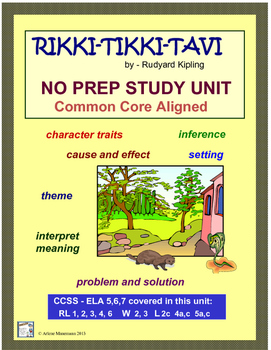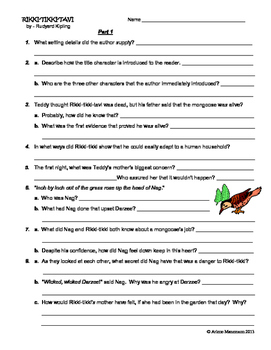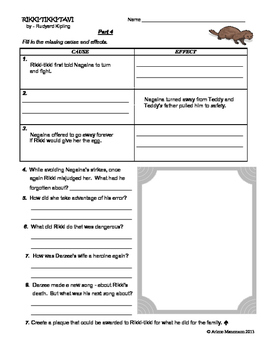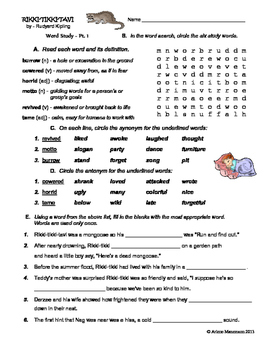RIKKI-TIKKI-TAVI Complete Study Unit, Common Core Aligned
- PDF
Description
This Rikki-tikki-tavi no-prep unit is complete and addresses virtually all the CCSS Reading Literature skills for ELA 5,6,7, plus Writing 2 & 3.
It is excellent as a Back-to-School review of skills learned the previous year, or as a mid-year review.
The unit includes -
- student worksheets for the complete story, divided into four parts, and including questions, graphic organizers, and short essay responses,
- a post-reading analysis for students to work with,
- a two-page test: multiple choice and sequence,
- a one page Kipling biography, with student response/questions,
- vocabulary worksheets aligned with CCSS Language
- an essay assignment, with student handout that includes a format for them to follow,
ALL ANSWERS INCLUDED for the above.
These are high-quality worksheets and handouts, with classroom tested, student-friendly formats and clip art.
Please see the Preview for two worksheet samples.





